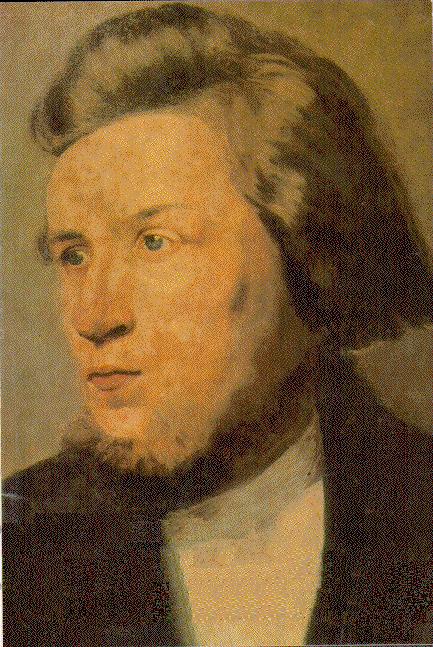I’ve been writing for this blog so long that I think I can probably reanimate some of my old post topics. A search of our archives shows that it was in 2010 that I last wrote about the Christmas hymn, “It Came Upon the Midnight Clear.” I’m not going to denounce it. In fact, I kind of love it. But it’s not really a Christmas hymn. It’s more of a Christmas song, like “The Christmas Song” (the Chestnuts one, you know) or “Silver Bells.” Because it’s not about Jesus, and was never intended to be.
The putative hymn was written by Edmund H. Sears, a sensitive-minded Unitarian minister who worked in Toledo for a while, before suffering a breakdown (perfectly understandable, under the circumstances). In time he ended up serving a church in Wayland, Massachusetts. He wrote “It Came Upon the Midnight Clear” in 1849, and it was published with a tune by Richard Storrs Willis in 1850. His motivation seems to have been his depression over the Mexican War, which raised considerable opposition in the country (Lincoln famously voted against the war, and lost his seat in Congress because of it).
The hymn goes:
It came upon the midnight clear, That glorious song of old, From angels bending near the earth To touch their harps of gold; "Peace on the earth, good will to men From heaven's all-gracious King" – The world in solemn stillness lay To hear the angels sing. Still through the cloven skies they come With peaceful wings unfurled, And still their heavenly music floats O'er all the weary world; Above its sad and lowly plains They bend on hovering wing, And ever o'er its Babel-sounds The blessed angels sing. But with the woes of sin and strife The world has suffered long; Beneath the angel-strain have rolled Two thousand years of wrong; And man, at war with man, hears not The love-song which they bring; – Oh hush the noise, ye men of strife, And hear the angels sing! And ye, beneath life's crushing load, Whose forms are bending low, Who toil along the climbing way With painful steps and slow, Look now! for glad and golden hours Come swiftly on the wing; – Oh, rest beside the weary road And hear the angels sing! For lo! the days are hastening on By prophet bards foretold, When with the ever circling years Comes round the age of gold; When Peace shall over all the earth Its ancient splendors fling, And the whole world give back the song Which now the angels sing.
Do you notice something missing in this so-called “Christmas Hymn?” It says nothing about Jesus. Not a word. You’ve got angels and peace, which hearken back to Luke’s account of the Nativity (verses 8-14):
And there were in the same country shepherds abiding in the field, keeping watch over their flock by night. And, lo, the angel of the Lord came upon them, and the glory of the Lord shone round about them: and they were sore afraid. And the angel said unto them, Fear not: for, behold, I bring you good tidings of great joy, which shall be to all people. For unto you is born this day in the city of David a Saviour, which is Christ the Lord. And this shall be a sign unto you; Ye shall find the babe wrapped in swaddling clothes, lying in a manger. And suddenly there was with the angel a multitude of the heavenly host praising God, and saying,
Glory to God in the highest, and on earth peace, good will toward men.
So you’ve got the angels and you’ve got the peace, demonstrating that the poet had Christ’s birth in mind. So why didn’t he mention Christ Himself?
Because he was a Universalist. He didn’t really think Jesus was that important. He believed Jesus simply represented a universal principle of peace and love, which gives us hope for a coming time (“the age of gold”) when Mankind will have evolved to the point of outgrowing war.
In many more orthodox hymnbooks, the words have been altered a little. The changed lyrics substitute “the time foretold” for “the age of gold.” And they say “the new Heaven and earth shall own the Prince of Peace their King,” instead of “when Peace shall over all the earth its ancient splendors fling.” I don’t generally care for meddling with original texts, but I like those changes just fine.
Still, the hymn still leaves me a little melancholy.
Beautiful, though.
I looked for a good video of the hymn/song to embed above. But everybody had to get cute with it one way or another (worst are the English, who use the wrong tune!). So I had to settle (yet again) for the Heretic Tabernacle Choir. Which is kind of appropriate, I guess.






